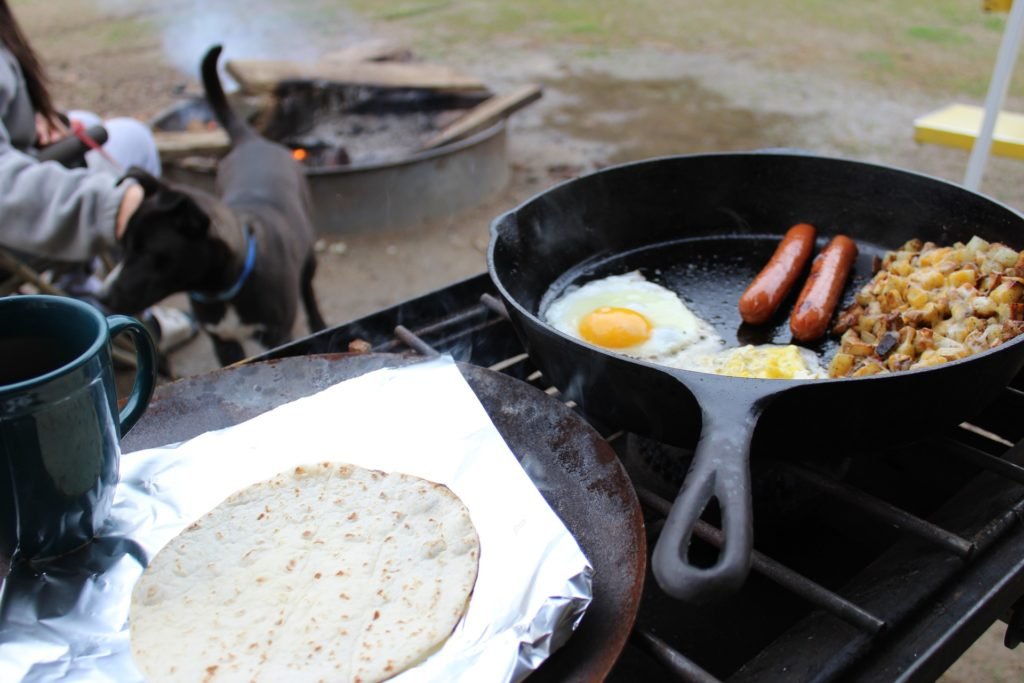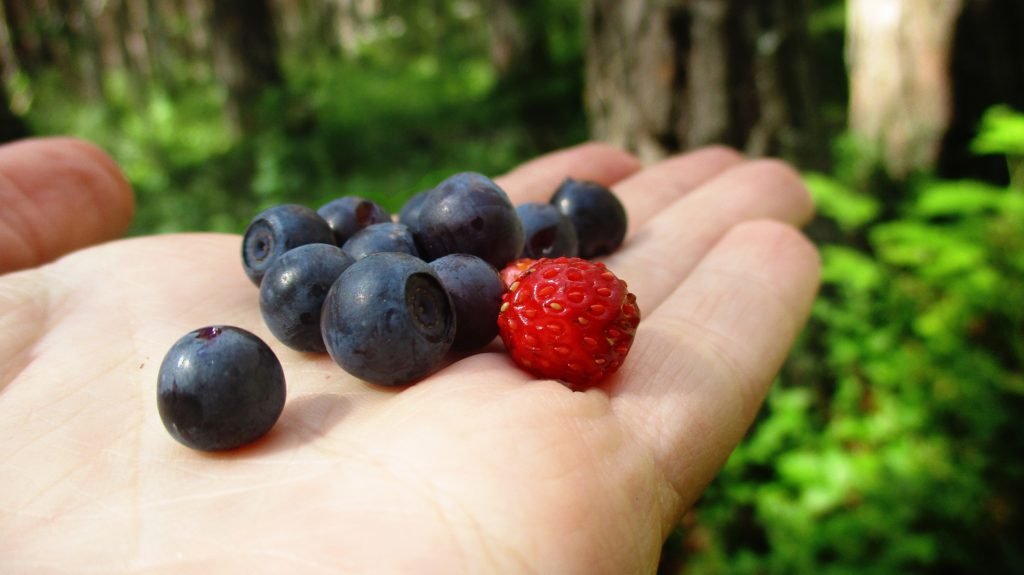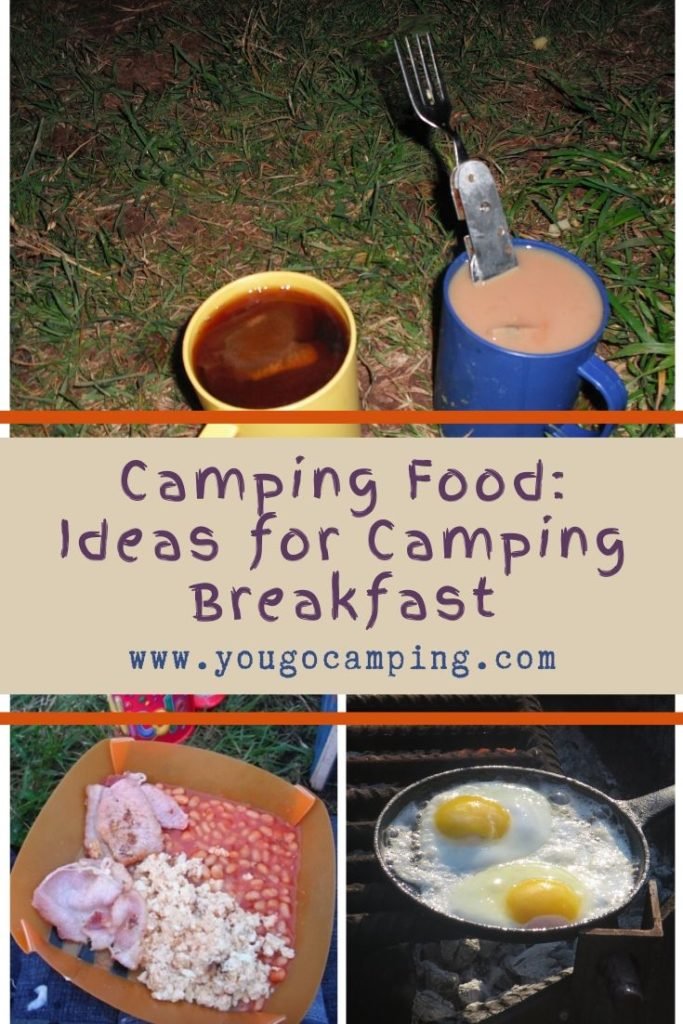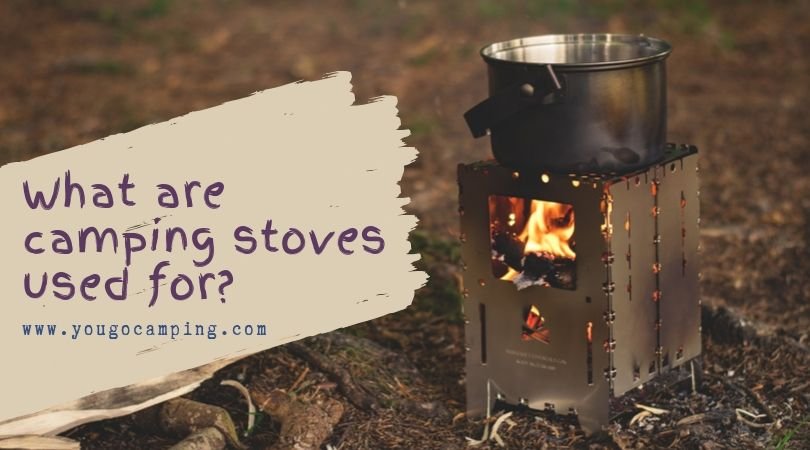When you are camping, you need to eat breakfast. It doesn’t matter whether you don’t normally eat it. When camping, you’re using extra calories, you’re keeping yourself warm (or cool), you’re being more physically active. We can guarantee that the walk from your tent to the toilet in the morning is further than from your bed at home to the bathroom!
Therefore, you need a good, hearty camping breakfast.
There are a number of options, depending on whether you want to make ahead and how much you want to carry.

Breakfast Burritos
- 2 wraps (soft tortilla wraps)
- 1 egg
- 2 hot dog sausages (the tinned kind)
- 3 small potatoes (new potato)
- Cheese
- Tomato sauce (kethcup)
- Roughly half a small onion/1 shallot
- Salt and pepper to taste.
Cut the potatoes into small cubes, and finely chop the onion and fry them until they’re cooked and soft. Chop up the hot dogs and fry with the potatoes and onion. Add the eggs and fry until cooked.
Wrap some of the potato, onion, hot dog and egg mixture in the tortillas. Add cheese. Add ketchup, salt and pepper to taste.
Eat while hot!
Porridge
When we’re at medieval re-enactments, we have porridge. Porridge is a good slow-release carbohydrate to have for breakfast. Add some fruit to make it tastier!
We take a small pack of oats and some milk. Put approximately equal amounts of oats and milk in a saucepan and cook until soft and porridge-like.
You might want to add sugar, honey or salt, depending on your preference. We like to add fruit – especially apples and blackberries. We add a bit of spice depending on the fruit, so we add cinnamon with apples to make it nice and warming.
Porridge is an excellent start to a cold day.

Toast and Sandwiches
Camping breakfast foods will depend on what you usually like. Toast can be a bit difficult – we’ve tried the toaster thingies you put over a gas flame and, well, it didn’t go that well! But sandwiches are good.
So instead of jam or marmalade on toast, try jam or marmalade sandwiches. There are plenty of places that sell or serve those small one-serving jars of jam, marmalade etc. Or there are single servings of peanut butter, marmite etc. available online. Or you can just take the whole jar!
The fry-up
Good camping breakfast staples are eggs and bacon-based. There’s a reason that most campsites smell like a full fry up in the mornings!
With access to a heat source, eggs and bacon (and beans, tomatoes, sausages, etc.) are really easy and fairly quick to cook, as well as being tasty and filling. We’re English, so we do enjoy a typical English Fry Up in the mornings – eggs, bacon, sausages, beans, mushrooms, bread and butter.
- Fry everything in the same pan – sausages first (they take the longest), then bacon and mushrooms.
- Put them to one side and fry the eggs.
- Put the eggs to one side and cook the beans.
- Pile everything on your plate and add some tomato sauce on the side and you have the breakfast of kings!
Different areas have variations: Scotland has its square sausages, Yorkshire has black pudding). Our American friends add hash browns. Niki loves hash browns!
Food Storage
If you’re hiking/backpacking, you may be thinking about eggs and how fragile their shells are. Crack a few and put them in a bottle – we use an old drinks bottle. It keeps them safe and ready mixed.
We have tried a few different ‘egg holders’ but we’ve found that they’re made for a certain sized egg. They’re great if you only get that size egg, but if you’re buying fresh eggs from farmers’ gates or large eggs, they don’t fit that well in the holders.
Keeping food cool
Keeping things like milk and meat cool for your breakfast is the never-ending struggle of the camper. We have tried many options: cool box, electric cool box, bucket with water in it and stashing stuff under the tent.
The most effective and space-efficient is probably stashing stuff under tents (under the groundsheet, directly on the ground) and the bucket with water in it. Putting stuff under the tents is probably the best way, it keeps your food shaded and uses the cool of the ground to refrigerate.
We’ve used a bucket of water successfully many times (fill a bucket with cold water and put your refrigerated items in it – the evaporation of the water keeps everything a bit cooler), but in very hot weather, we haven’t had much success with the bucket keeping everything as cool as we’d like.
Cool boxes are good for car camping overnight. Freeze your milk and some water bottles to keep things cool for longer. We tried an electric cool box, but found that it wasn’t any more effective than a standard cool box with frozen things in it. Freeze as much as you can before setting off, it will help.
Niki has been lucky enough to camp next to a stream and tried the string bag tied to a tree and left in a stream method. This does actually work very well but it’s fairly rare to find the right campsite to rel on this method of keeping food cool.
Buying food in
At many campsites, they have a small farm shop. So if you’re really worried about milk going off, or you are desperate for your eggs to be sunny side up rather than omelette, you can usually pick up staples in the shop. Some sites also have fridges for use by the campers. Just make sure that you label your food and drink in them and take what’s left when you leave.
Camping Breakfast Nutrition
Whatever you decide to have for your camping breakfast, make sure that it’s filling, hearty, tasty, and full of good slow-release energy. You want a good foundation for a day’s activity. Camping time is definitely not diet time. You’ll need the extra calories for physical activities and keeping warm overnight. All the fresh air will make you hungry, don’t deny yourself vital calories.
Looking at calorie counts, typical MREs (Meals Ready to Eat – forces rations) have around 1200 calories per meal – that’s 3600 calories a day. We look at MREs because they are packed and designed to keep soldiers going in the field. We may not be soldiers, but hiking and even sight-seeing still take up huge amounts of calories, so we need to make sure we are starting the day with a decent amount to keep going.
MREs are a good choice for people who are worried about food storage or cooking outdoors (check out this article on campfire cooking!). Many of the modern ones include a flameless ration heater to heat it up.
Along with MREs, have a look at some of the ready-made foods for campers/backpackers – Firepot have some really really tasty packs! Ready-made foods are a great alternative to carrying fresh food around. Some require water, some are boil in the bag. They are all shelf-stable and last for a long time, so you can stock up for the next year in one shopping trip!
Morning brew
All good breakfasts require a good cup of tea or coffee!
Fee likes to get 3 in 1 coffee sachets (coffee, milk powder and sugar), Niki only drinks real coffee made from ground coffee, so she takes a collapsible filter or her coffee flask (a thermos that has a filter in it for coffee).
We also carry tea bags and powdered milk. For sugar, if we’re camping on our own, we’ll take sugar sachets. If we’re camping together, we’ll take a small jar with an airtight top.

Have a look at the travel accessories aisle of the supermarket for empty travel bottles. They’re perfect for sugar, salt and pepper. If you really want to be posh, there are camping specific travel bottles and kits available. If you’re not feeling posh, then reuse old bottles or jars – like we do!
Did you enjoy this article? What is your favourite camping breakfast? Let us know in the comment and share this article on Pinterest!



0 Comments